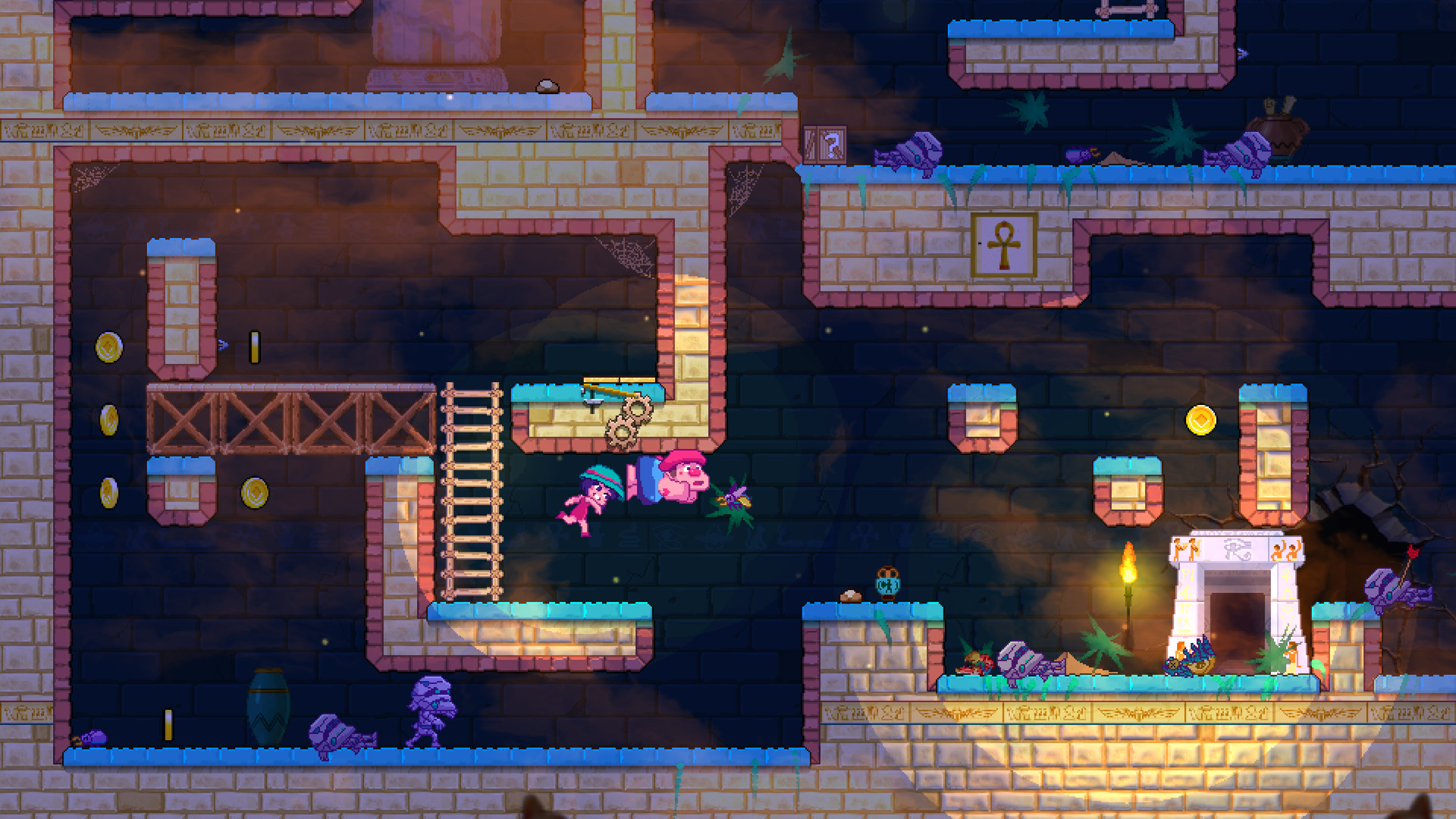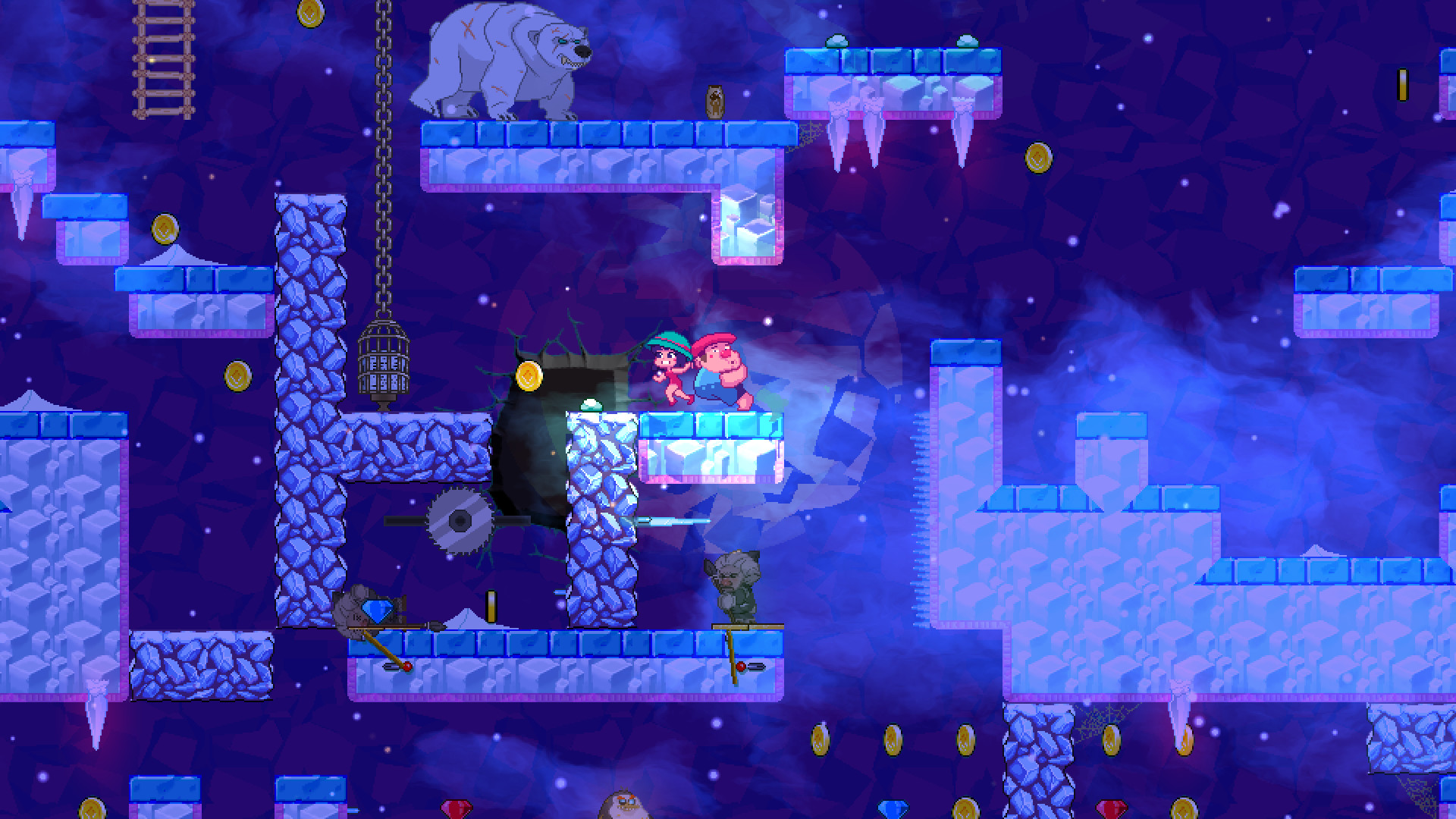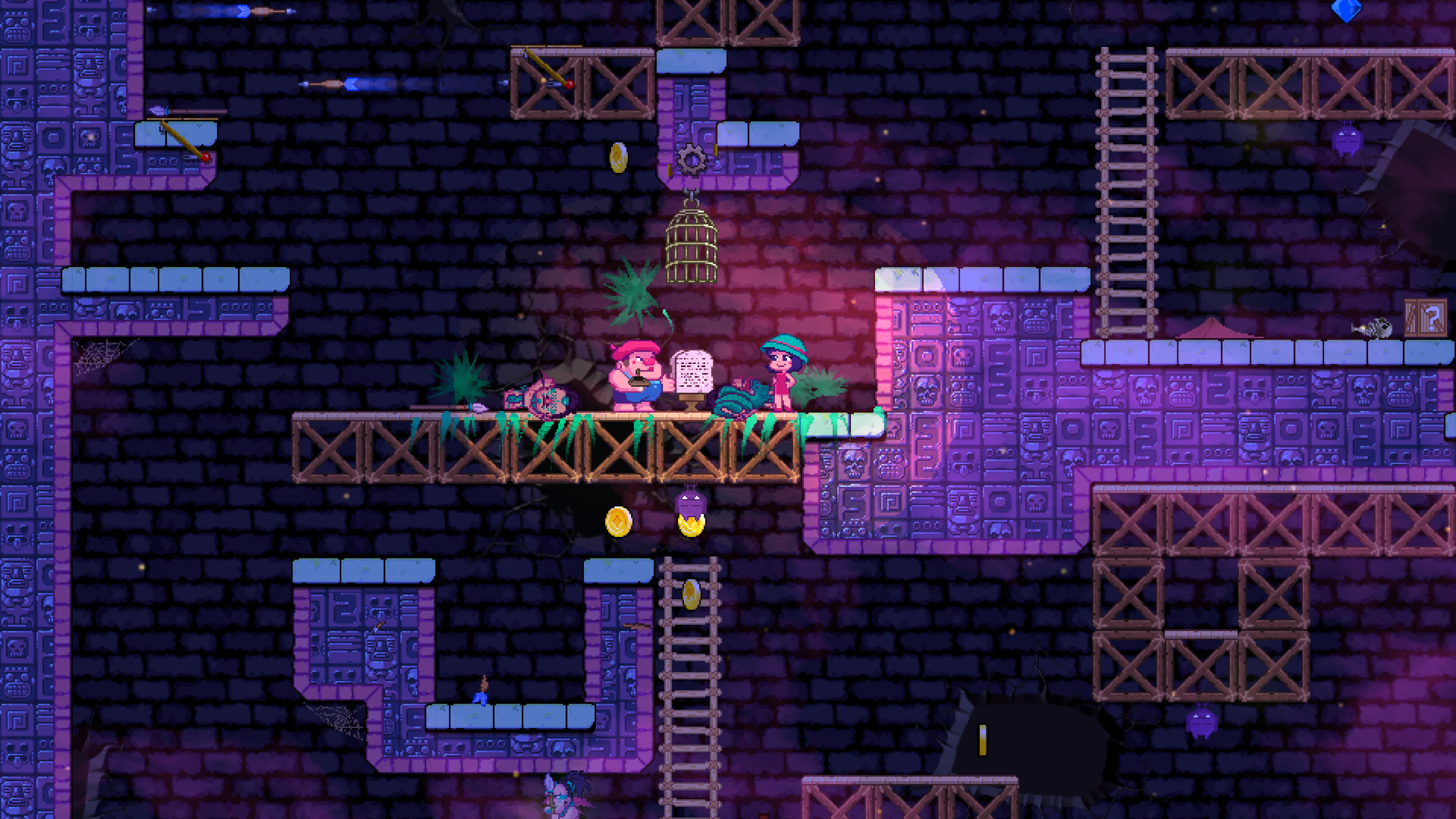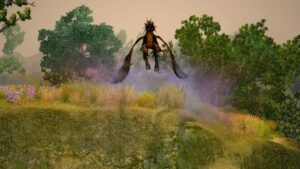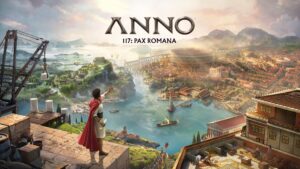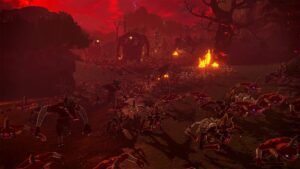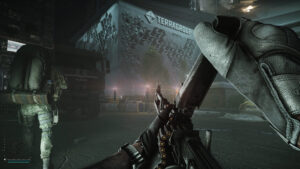
The roguelike genre has seen more than a few excellent new games in recent years, but if you’re looking for something on the accessible and light-hearted side in the genre, the pickings can be rather slim. PolyCrunch Games’ upcoming Falling Out, however, looks set to fill that void. Combining a vibrant visual aesthetic with what’s looking like a fun, family-friendly tone and a smattering of solo and multiplayer offerings, it seems to be taking solid shape so far. To learn more about the game and what’ll make it tick, we recently reached out to its developers with some of our questions about it and learned quite a bit in the process. Below, you can read our interview with Falling Out creator and PolyCrunch Games founder Neville Attard.
"I wanted to create something that kids will enjoy playing ideally with their parents. I wanted to go for a cartoony look and was inspired by several cartoons of the past, especially by Hanna Barbera like the Flintstones."
Falling Out has quite an eye-catching visual aesthetic. Can you talk to us about the process of deciding what the game would look like, and why you chose this style for it?
I wanted to create something that kids will enjoy playing ideally with their parents. I wanted to go for a cartoony look and was inspired by several cartoons of the past, especially by Hanna Barbera like the Flintstones. The first prototypes didn’t look as good as they do now, but the overall feel was still there.
At some point, I needed a poster for the game and I contacted some freelancers. The one I had made simply didn’t cut it but I did my best. One of the artists I contacted had a nice style and was luckily available, really loved the concept of the game too. Besides doing the poster, he made a static pixel version of Giorgio and Felicie just for fun. But I really loved his take and then commissioned him to do the concepts for all other enemies. He’s quite busy, so he did the concepts and I did the pixel art and animations. Doing animations is a very time-consuming process but when you see everything in action it’s worth it.
Being able to easily switch back and forth between the two main characters seems to be one of Falling Out’s biggest draws. How have you designed the different aspects of the game around that, whether that’s combat or platforming or something else?
Initially switching freely was not part of the design. The main aim of the game was that before starting to play you select whether you want to play as Giorgio or Felicie, and the other character would be a very frightened NPC that you have to protect and get to the exit safely. So if you played as Felicie, Giorgio wouldn’t do much besides walk after you and vice versa. So you would have to protect and carry him around. Sometimes you would need to leave your character behind to kill some enemies. This made it quite hard even though I liked the idea. But since we want to make an accessible roguelite, we had to improve on this.
One of the ideas from the publisher was to be able to switch freely. I already had all the animations for both characters anyway at that point (which last time I counted was over 400 frames). So first I quickly prototyped it to see if we think it’s better to switch freely and I think it was a good improvement. This eliminated that style of play where a player would leave his partner at the top, and after going down the level, he would need to go back up to get their character which was wasting too much time. Switching freely improved the flow. I’ve seen my kids doing some crazy stuff with the switching like throwing their partner and then switching in mid-air. For the hardest mode, we’re thinking of keeping the original design, i.e. you cannot switch and have to carry and protect your partner. It completely changes the way you approach a level.
How much will the two characters differ from each other in terms of how they play?
Felicie is fast and nimble, Giorgio is a bit slower and thus more controllable but has the advantage of being bigger. So I suggest starting playing with Giorgio since you can crush enemies more easily. I’m sure most players will gravitate towards Felicie as they get better playing with Giorgio. There are some other subtle differences between the two. For example, Felicie can open Treasure Chests with her hairpin. Giorgio cannot but on the other hand, he can eat Beans and his farts will make him jump higher! Giorgio can use the club if he steals it from trolls, but Felicie cannot. So there are differences, but just enough so that they don’t feel too different.
Progression is something that roguelite games have to balance very meticulously, given their very nature, especially when it comes to short-term versus long-term upgrades. What approach have you taken to progression in Falling Out?
So roguelites have a lot of randomness involved and I found it’s very difficult to balance randomness. There are several steps in level generation that we can play with to balance difficulty and they are:
– Templates selection
– Enemies types and spawn rate
– Traps types and spawn rate
– Hot spots
Each pyramid has 4 levels and a final boss level. You always start from the top. The further down you go, the harder it gets. When generating levels, we basically have several templates that are randomly stitched together. Plus each template has its own randomness within it. So this technique offers a lot of varying levels. As you go deeper we start adding special templates ( chambers with a pre-planned layout of traps). You might think this is not so random, but it actually gives the player the chance of getting to know a particular pattern. You will get used to how to avoid that part once you realise the pattern/timing of how to move. And I don’t think that’s bad. It’s like learning a trick and you would know how to do it again if you encounter it again.
The deeper you go, the more enemies of the current biome are revealed to the player. I tried to order them by difficulty, so for example, in Egypt, you have the mummy and the scorpion initially which aren’t so difficult to kill. The scorpion patrols a platform and the mummy will come after you. As you progress through the Egypt level you start getting spiders, bigger scorpions and the dreadful scarabs. The latter fly at you in a straight line when they spot you. But once you get used to them and time their flight, they become second nature to kill. How many enemies are spawned also changes as you progress down a Pyramid, so you’ll get more enemies the deeper you go. Similarly for traps, you’ll get more traps and different types. Besides all this, we’re currently experimenting with hot spots which are areas typically found near the exit and this area increases the deeper you go.
Then there are also difficulty settings – Tourist (easy), Returning Visitor (medium), and Badass (hard). The easy is being designed for those players who want to get their first taste of a roguelite, and the hard is to offer a good challenge to the already experienced players. They can change the setting whenever they like and each difficulty will have its separate leaderboard.
We’re always trying to find that sweet spot where the difficulty increases smoothly, keeping the players engaged without getting them frustrated.
"We’re always trying to find that sweet spot where the difficulty increases smoothly, keeping the players engaged without getting them frustrated."
What can players expect from Falling Out’s world in terms of the variety it will offer with its environments and biomes?
We’re trying to give as many varied environments as we can for a solo indie dev endeavour. There will be 4 worlds at launch:
– Egypt
– Maya
– Antarctica
– Underworld
Each world has its own set of templates from which levels are generated. It’s very difficult to get a sense of architecture in a world made of… well… blocks. But besides the graphical element, you should get a different sense of how they are built. Once, I had a bug where during an Egypt level, I was getting the Mayan templates. And even though I was seeing Egypt graphics on screen, I knew I had a bug where it was using Mayan templates, because their feel is different from Egypt templates. Mayan levels will feel more stepped like their old temples. Antarctica was quite fun to do. Having an ice world with slippery platforms is a must in a platformer. When creating the Underworld I had in mind the eerie feel of Monkey Island when Guybrush was in the Monkey Head underground trying to find the ghost ship. So I had to have lava flowing in Underworld. I actually wanted to recreate the 8-bit cycling palettes of the old when we were still using 256 colours total in a game. At the time, due to memory constraints, you would have one image and then a number of those colours very close to each other would be shifted programmatically giving the illusion of animation. This was pioneered by Mark Ferrari the artist of Monkey Island to create effects for water or lava flowing. It was fun recreating that feel with today’s shaders.
Falling Out’s rewind feature is an interesting one, and it seems like it’s being used for humour as much as it could be an accessibility tool. Is that the sort of balance that the game as a whole is trying to strike?
I always got frustrated not knowing why I died in a game, especially when there was a lot going on. So Death Rewind was one of the features I implemented very early to see if it actually helps and when playtesting it with my kids, we were laughing so much when playing it VS that we had to have the rewind at hand at will and not just when dying. So I made it so that you can pause and rewind any time during the game and see the last 30 seconds. This actually came quite handy for other things. I could replay to see what happened if there were some visual glitches. Also, it came in handy for reporting bugs, because friends on Discord testing it could now send me a bug by just hitting F8, they type something quickly and I would get by email the replay data too. It was quite a pain to maintain, but it’s so much fun rewinding and seeing the chaos unfold in slow motion, especially when playing it with your friends and family.
Falling Out is promising some interesting side content as well with its Daily Pyramids and the versus mode. Can you tell us more about those?
So besides the different difficulties, we have the Daily Pyramid. This is a randomly generated pyramid which is the same for everyone and kept the same for 24 hours. A leaderboard is reset accordingly. Initially, this was linked on Discord where a player could enter his Discord user id, and whoever is at the top would be given the role of Pharaoh and everyone would see that player with a crown near his nick too. If someone topples the Pharaoh’s score, the current Pharaoh would then get a discord notification. It was cool but this has been currently removed from the build because we changed the backend. If I have time, I’d love to get this back in at some point. Perhaps after launch.
Then we have some local multiplayer modes which can still be played remotely with Steam Remote Play Together.
Co-op: same as the Solo campaign but your partner is controlled by another player. One might think it’s easier playing it Co-op because you have another player helping you out, but actually there’s a lot of communication that needs to be going on and you need to stick together. Co-op is NOT played on a split-screen to enforce they have to stay together.
VS modes: We have 3 modes which are played split-screen:
Loot battle: In this mode, both players have their NPC partner (you cannot switch here). In short, the richest couple who exits safely wins. On screen you would know how many coins there are in the level, and you would also know how much money you and your opponent collected. As soon as one of the players gets too much loot, the other player will automatically start hunting, something which comes second nature and doesn’t need to be explained apparently 🙂 This inevitably ends in a throw-anything-you-find fest, because when you hit a player with something (e.g. stone, crate, or vase), half the hit player’s coins will spew out. Besides this, your opponent can be cheeky and take your NPC partner and place it on traps to get a cheap win by killing your partner. Moreover, the player who exits first triggers the flood and becomes the annoying jellyfish. He can swim around and try find his opponent to zap him and distract him from collecting any remaining loot.
Loot battle no partner: Same as above, but you don’t have an NPC partner to take care of.
Capture the Friend: The players start at the bottom and your NPC partners are at the top hiding in cardboard boxes (so they aren’t hit by enemies). This is more like a race to the top through a maze. But you will find enemies along the way too. Sometimes you might need to collaborate temporarily but that collaboration is typically short-lived. If you find your partner before your opponent, you can bet that your opponent will come after you and try stealing your partner. This ends in a lot of back-and-forth throwing of partners. It gets ridiculously fun and comical pretty fast.
With Falling Out supporting both solo play and co-op, would you say the game favours one over the other? Has it been designed with any of the two in mind, or are both equally viable?
There is quite a long story as to how these features were designed and developed but in short, I became very sick in 2017 and I only started to feel better in 2019. On some good days in 2019, I started prototyping a platformer just for fun, perhaps a couple of hours a day – as you do! I was at the desk and my kids saw me playing the first prototype and they thought I downloaded a new game. They were really amazed that I was actually developing a game so they started suggesting ideas, and so from solo, it became local multiplayer. They actually suggested the multiplayer so I can’t take all the credit. They said “I want to play it against my sister – that would be really cool”. They are twin sisters so there is some unhealthy competition there…
The original idea was a small 3-month project solo platformer with random generated levels and just one world. I wanted to test the waters coming from mobile casual games. But as I developed the prototype further, I got better too. So I continued working at my pace. Coincidentally VS (Loot Battle) came before Co-op actually, because I didn’t have many animations for Felicie. She only had animations for walking and falling basically. Along came another request from my kids… do Co-op as they wanted to play as Felicie. So after doing lots of additional animations, you could now play as Felicie too. We realised that Co-op was a different kind of fun. While VS was chaotic and funny, co-op was calmer but required more communication and sticking together. Initially, we were so used to VS that when we started the first few seconds of a Co-op session, we still got that knee jerk reaction where we threw some nearby vase at each other! And then we’d go “wait, we’re playing co-op now!” So even though co-op came along almost by mistake, the gameplay didn’t change much.
"The original idea was a small 3-month project solo platformer with random generated levels and just one world. I wanted to test the waters coming from mobile casual games. But as I developed the prototype further, I got better too."
You have released a demo of Falling Out for players on Steam. How has the response to that been, and how is it impacting the game’s development?
In general, we’ve had a really positive response to the demo! We still have some time to collect all the invaluable feedback from the community and implement as much as we can before launch this year. Firestoke and I are keen to make sure the game lives up to everyone’s expectations and being open to feedback is part of that process. We’re also part of the Steam Next Fest starting on the 13th June so we expect a lot more people to pick up the game and take our odd couple for a spin!
Roughly how long will it take to see the game through to completion?
It really can depend on the player and that’s the beauty of these types of games. There is also a ton of replay-ability factors to consider so you could sink hours, days or months into the game. However you play and whatever your skill level, we aim for it to be challenging and rewarding throughout. Also, for completionists there’s several levels of weapons to craft, and also good number of achievements – some are easy to get and some are more challenging to obtain.
Those who like to play with their friends and family, they can play Co-op or VS modes. They can do so either locally (local couch multiplayer) or also remotely via Steam Remote Play Together.








